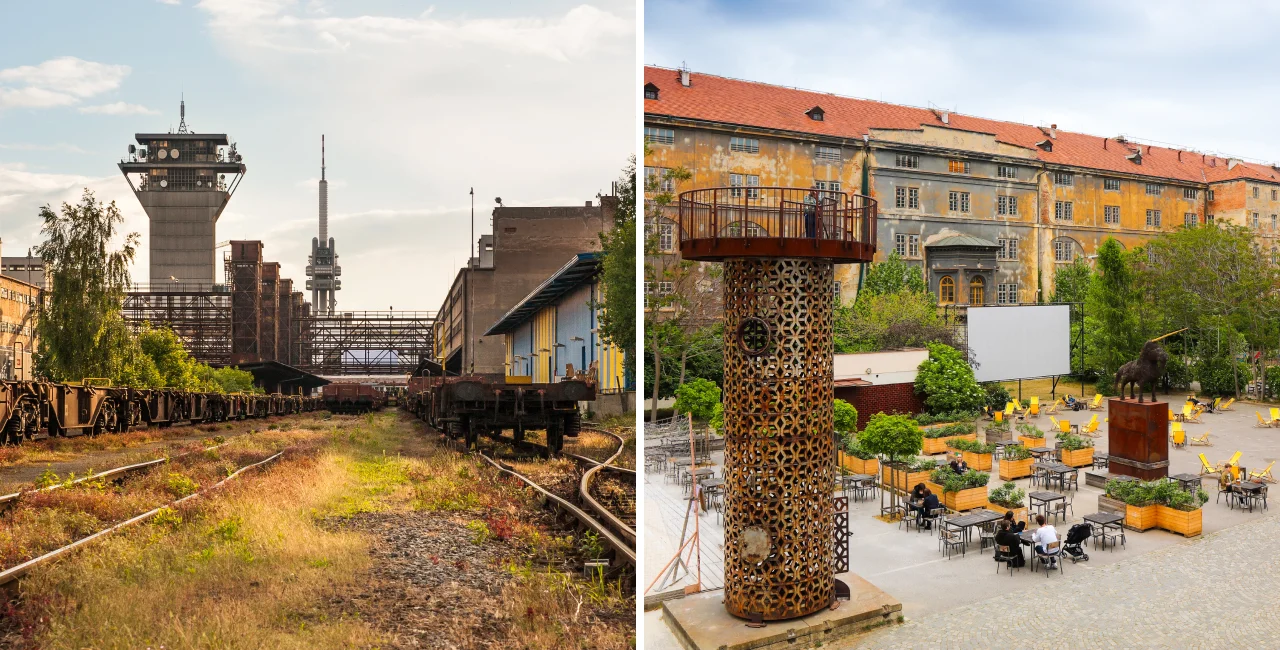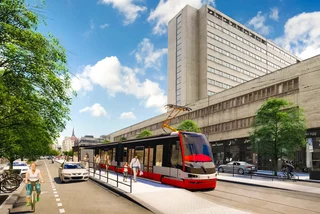Two historic Prague spaces, once cherished cultural venues, are set to be revitalized after closures that sparked widespread outcry among preservationists and the public.
The Žižkov Freight Station, previously an epicenter of artistic activity, and the Karlín Barracks, formerly a military site turned popular year-round venue with a beer garden, skating rink, and outdoor cinema, will reopen to the public in new forms.
Žižkov Freight Station: A new Prague district
Prague confirmed plans to purchase the historic Žižkov Freight Station and surrounding land from Czech Railways (ČD) for CZK 1.43 billion this week. The city council has approved the deal, which still requires a vote by the city assembly.
The station, a protected functionalist structure, will be renovated into a multi-purpose center with cultural spaces, educational facilities, housing, and offices. The purchase also includes land for a tram line to connect the new neighborhood to Prague’s public transport network.
The development plan envisions up to 15,000 residents living in the area around the station. Developers like Central Group, Sekyra Group, Penta, and Finep already plan residential projects there. The renovated station will provide essential public services and become the area's cultural and social hub.
Prague 3 Deputy Mayor Pavel Dobeš praised the move, calling the station key to the area’s development. “For a new neighborhood with about 10,000 apartments to thrive, this site must become a vibrant cultural and social center with adequate transportation, schools, and public services,” he said.
Built between 1934 and 1937 by architects Karel Caivas and Vladimír Weiss, the station has been a protected cultural monument since 2013. Activists and residents fought for years to save it from demolition. Today, the largely empty building houses a few businesses and art studios. Train operations ceased entirely on Jan. 1, 2016.
Prague decides on Karlín Barracks
Prague has completed a change to the spatial plan that will allow the transformation of the former Karlín Barracks. The change was approved by councilors earlier this month and will be voted on at the next meeting. The city acquired the building earlier this year through a property exchange with the state.
The site is currently designated for military activities but this designation is outdated. Deputy Mayor Petr Hlaváček said, “This was a remnant of the past; it’s clear the building is no longer suitable for such use.” Following the change, the building and its courtyard will have a mixed function, allowing various uses. Hlaváček added that the Prague Development Company had prepared a project plan, now being discussed with preservationists.
The site could host apartments, a cultural center, a technology park, or school facilities. The deputy mayor stated that the University of Applied Arts could use part of one floor as soon as next September. In addition, the cultural and social center that operated in the courtyard of the building from 2017 to June could resume operations if the zoning plan change is approved. The building authority had previously ordered the center's closure due to non-compliance with the spatial plan.
Hlaváček noted that repairs to the building’s façade are necessary due to its poor condition. The city-owned company, Trade Center Prague, which manages the area, was forced close the adjacent sidewalks at the end of August for safety reasons. The roof will also require repairs in the future, though this is expected to happen in a few years. “We are planning a gradual reconstruction,” Hlaváček said, adding that the city will first focus on the lower and ground floors.
The historical Karlín Barracks building dates back to the 19th century and was used by Czechoslovakia and later the Czech Republic for military purposes. It has been listed as a cultural monument since 1958. The state has attempted to sell the building multiple times but without success.












 Reading time: 3 minutes
Reading time: 3 minutes 


























